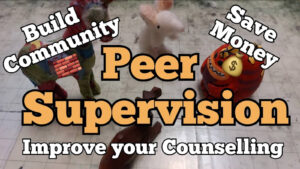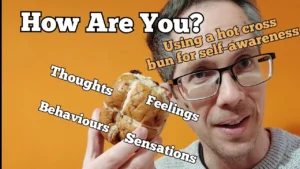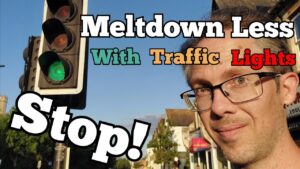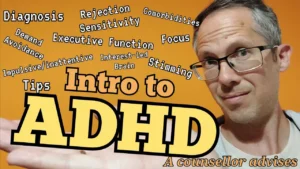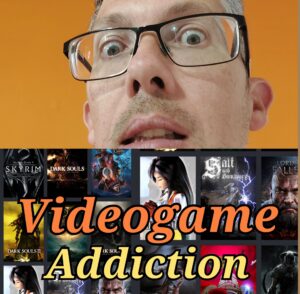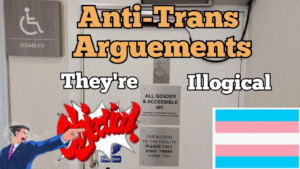Contents
Meltdown Less with Traffic Lights
Do you sometimes lose control? Whether that be strong feelings like anger, meltdowns, sensory overwhelm, or burnout?
It’s distressing – both for you, and others around you; and may feel like you’ve been possessed… the straw that broke the camel’s back, emerging disproportionately as though from no where.
Purpose
This article is about helping you to recognize what’s going on for you so that when you are distressed, dysregulated, angry, overwhelmed – that you have more of a sense what’s going on for you.
Being more aware gives us more of an opportunity to calm ourselves down and to stop ourselves erupting. So, I’d like to teach you a way of being able to self-regulate and understand what’s going on for you. And I want to do it using traffic lights.
How do you feel Right Now?
In touch with your feelings
A very small minority of people will be very comfortable with that question. They notice several feelings at play, nuances, complicated interplay of emotions that are informing them on their state in this moment. And that will help them to get an understanding of what they’re thinking and how they’re behaving.
This person with high emotional intelligence and likely had a pretty secure attachment growing up. As a baby, when they were sad and they were crying, mum would look them in the eye, see they were upset, and comfort them.
When they were angry and frustrated, that would be mirrored back to them. They would be cooled from their anger.
When they smiled, mum would smile back at them. There’d be a sense that their feelings are respected, mirrored, and not anything to be feared. Most of the time, those caregivers would be reliable people that they could depend on.
To make things even nicer for our theoretical person who is in flow with their emotions, they have had an easy life where they have not suffered oppression. There’s no sense of conditionality in how they grew up. They weren’t bullied in school. There is no one telling them ‘this is how you need to behave’. They have been able to flow their whole life through, and because of that they trust their feelings. They might have had a lot of therapy and they are really in touch with themselves and not a lot of bad has really happened to them or when it has they’ve got the resilience to get through it. They’re neurotypical, have no trauma, and no mental health problems.
Less in touch with your feelings
This person I described is unrealistic and slightly fictitious. Very few of us have had the ideal caregivers. Even if our caregivers try their damnedest (and I believe that for most caregivers) they let us down. Most of us have faced bullying in school or have been bullies out of our own insecurities.
We’ve entered workplaces where we feel we don’t belong.
We will have learnt that we need to act, feel, and think a certain way to belong; and the most fundamental of human needs is to belong – we will do just about damn well anything to do it, including losing a sense of trust in ourselves.
Imagine we’re at a party we don’t want to be at? We might feel bored, anxious, or even frustrated if we dislike people there or would rather be elsewhere. Trouble is, there’s that need to belong so instead we mask, pretending we like it and want to be there and hiding those ‘negative’ feelings towards the party.
Neurodivergence
Imagine, added to that, if we were neurodivergent. If we had sensory sensitivities to the noise, lights and smells at the party – even more to mask.
Neurodivergence (particularly autism) can also carry a condition called alexithymia. A condition where it’s difficult to notice feelings in ourselves or at least verbalize them or understand what they are, and so to struggle to notice feelings in other people. This is common in autism where 50% of autists will experience this to some degree.
In ADHD Self-monitoring and Emotional Regulation are also Executive Functions that can be a challenge, again affecting emotional awareness and our ability to calm ourselves when over or underwhelmed.
Gender
I could talk about gender.
We might think that as men we very much struggle to access any of our feelings besides anger. But the truth is it’s not just men who are less emotionally intelligent. Yes, we are somewhat conditioned to not express vulnerability in many circles (outside of recovery), but women also have some feelings being less culturally acceptable than others. There is a conditionality on how we should feel and behave that falls into gender constructs.
Results
We shut ourselves down. We sometimes don’t know when we are dysregulated – let alone why.
This is a consequence of our society that is all the more enhanced if life has impacted on our emotional resilience: trauma, abusive relationships, bereavements, transitions, menopause, infirmary – all of these things stop us being able to stay regulated
Hot Cross Bun
The CBT Hot Crossed Bun breaks down our experience into Thoughts, Feelings, Sensations and Behaviours. All of these are valid ways of assessing your experience. If you find you are less literate in your feelings, notice what is going on in your thoughts e.g. are they racing or numb. If your thoughts are too intense, notice what is going on in your behaviour – are you pacing or stimming, are the shoulder’s hunched? If you’re less literate with the body, reflect on how you are behaving.
Different clients will have different strengths and different ways to access their experience but they are all valid. So to, in counselling, every client is unique: Some clients will cathartically spend the session accessing strong feelings and expressing them, some folks are more creative/playful/use imagery. Some folks are more somatic and talk about where they are experiencing things in the body or the characteristics of that experience. Some folks prefer to talk about the narrative or access their experience using a special interest.
All of them are valid. Don’t you dare say to yourself that just because you don’t feel things strongly, you’re in any way defective.
Traffic Lights
At times we lose control. Using traffic lights, we are in that Red Zone and unsure how or why we got there, but we’re there.
I’ve written this article to use traffic lights as a tool to grade how you are emotionally. Rather than trying to expect you to carry around an emotion wheel to identify the finer details of exactly how you feel, I want you just to realize when you are feeling good (green), when you’re feeling a bit in the middle (amber), and when you’ve lost control (red).
If we can get to that place where we are more aware when we’re tipping over the edge, then that gives us a bit more control.
Summary so far
Our emotional process of what we’re feeling can be very complex and multifaceted. Our feelings influence how we behave. And sometimes behaviour that we don’t accept is informed by our feelings.
Most of us, particularly when we’re first starting therapy, if we have had trauma in our life, if we are neurodivergent, or if we’ve been conditioned through various different societal, cultural, and familial practices, will struggle to know our internal affective state.
Consequently, we may act up and move into that red zone, behaving in ways that feel shameful, difficult or damaging without having a sense of control over that behaviour.
Building emotional intelligence and literacy is something that comes steadily within therapy by being understood and accepted, which allows us to understand and accept our own feelings. Expecting ourselves to be completely emotionally literate and to understand the ‘ebbs and flows’ of what’s going on with our internal state is sometimes unrealistic, particularly in the heat of a moment or when there have been a lot of pressures going on in our lives. And for some of us will genuinely struggle to get to that place of being able to have our feelings internalized into our conscious.
To simplify things, rather than having to think of complex feelings, I propose a traffic lights system.
Are we in Green?
Are we in Amber?
Or are we in Red at the moment?
Green Zone
This is where people ask how we’re doing and we say, “I feel fine.” And we genuinely mean it.
We may even feel happy in this place or have pleasant feelings – nothing feels wrong nor are we overwhelmed in our senses. We have a reasonable amount of focus, we’re not overly bored or tired, we have enough stimulation. Our physical health isn’t too bad.
If it was an actual traffic light, we’d drive through it on green without thinking – no pausing to reflect. This is the same emotionally – when things are fine, we’re on go mode rather than reflecting on why things are fine or appreciating it.
It’s the Green Zone, though, that’s got the most opportunity for reflection when our affect or sensory needs aren’t overwhelmed.
We can reflect on times we have been in other zones like amber or red – what was happening, what went right or wrong? Could anything be changed
We can also reflect on being in the green zone itself, practicing the discipline of gratitude so we’re not distorting out worldview to only see the negatives, appreciating our tolerance to be in the Green Zone.
Clients will often come to counselling with this belief that they can only talk about things that are going badly in their life – the problems rather than successes. Counselling does provide a safe confidential space to talk about that kind of thing, the stuff that is shameful, difficult, our internal state and childhood that we likely can’t talk to others about. But there is also benefit to talking about the positives, and fostering that gratitude can reprogram our brains to recognise what is going well for us and really acknowledge positive things in our lives.
There doesn’t seem to be a word in English that’s positive for self-love. There are words like selfishness or arrogance, but if we can’t love ourselves, how are we meant to encourage other people to love us?
So, green zone, bask in it. Stay there. Love yourself. Acknowledge how you’ve got here. Think about how you can enhance those moments, how you can keep green. And if you shift from green towards amber or red, put that in perspective. That hasn’t ruined the moments of green. Don’t treat it as a binary. You had to halt. You had a red moment, but a lot of your day was green. So, let’s acknowledge that.
Amber Zone
In the amber zone, you might start to notice feelings bubbling up for you. You may start to feel anxious, afraid, upset, a little bit of frustration, not quite full-blown anger – but feelings are emerging. You may start to notice sensory overwhelm: the noises around you are too loud, the lights too bright. You may notice that you are beginning to feel bored, disinterested, maybe even irritated in a social interaction in the amber zone. You may notice your body communicating to you: tight shoulders, clenched & jaw, you feel hot, have a slight headache, and muscles ache a little more than usual. You may notice intrusive thoughts, negative thoughts that prickle in your mind and you think, “Oh, these aren’t very pleasant.” You may notice that you’re feeling quite critical either of yourself or of other people. All of these are clues that we are entering into the amber zone.
The thing that distinguishes amber from red zone is that we have control here. This is where, in a car, we are preparing to slow down and aware that the stop is coming so we don’t just slam on our breaks. In our body, If we start getting cues that we are entering into the amber zone, it’s when we notice signs of dysregulation and seek ways to soothe that and return to our window of tolerance before we enter the Red Zone.
Think about what signs you can notice in your behaviour, feelings, thoughts and body sensations. Likewise, consider if there are certain triggering environments/people/events that might dysregulate so you can prepare yourself psychologically if you are likely to encounter them. If there is a trusted loved one you spend a lot of time with, or someone who supports you, it may be worth also sharing these clues with them.
Red Zone
It’s in the red zone that we may experience meltdowns if we are autistic. We might almost feel like we have been possessed, acted out or done things that are highly distressing both for us and for other people. We may have shouted, stomped, screamed, thrown something. It’s this red zone where we might acted on our temper. We may say things we regret to people who we love. We might swear or cause a scene in public. If we are in recovery, it is the red zone where we might pick up a drink again. We might lapse and we don’t really have awareness why. You become powerless in that moment over addiction. Red zone might feature more ideation, negative thoughts that we don’t really want. negative horrible thoughts towards our selves. Suicidal thoughts for example – we may hurt ourselves in the red zone. We may hurt other people in the red zone, especially people who are close to us. It’s when we are snappy, we ruminate on it afterwards, thinking, “Oh, I was such an awful person in that moment when I was in the red zone.”
Those, red zone moments, are the ones that people come to therapy for. Those are the moments when they’ve done horrible things, when they have offended, when they feel shameful, when they’ve lost close relationships over being in that red zone, and they come to me wanting to be able to control themselves thinking, “Simon, I’ve done it again…I’ve done this awful thing, I am a terrible person”. The amount of shame that people internalize from going into that red zone.
When we are in the red zone, we have very little control. Control was in the amber zone. If we are a car and we get up to the red traffic light, what do we do? We halt. We stop. And when we’re experiencing red zone moments, when that’s where you are on the traffic light, that’s kind of it. We’re desperately trying to regain moments of awareness, of attention, of trying to engage our cognitive brain again and just to be able to stop. If we’re in meltdown, it may be because of the environment. Maybe our senses are overwhelmed. get away from the triggering environment as best you can. If it’s something else that’s triggered us, let’s say we are angry because the house is untidy, then get into a different room.
There’s moments in these red zones when really what we want to be doing is escaping. I want to emphasis though, that in these moments we have really very little control over our behaviour or emotions.
People don’t like being in that zone, no one does. Nor do they like other people being in that zone.
In relationships it can often be tempting to try to resolve things during Red Zone moments, particularly if our conflict style is more emotive and we want to solve things straight away rather than leaving it to resolve. When we’re in the Red Zone though, we just need to halt and pause – acknowledge the feeling and wait for it to pass before resolution is possible because resolution is amber or green. The Red Zoned person may not even be aware of their behaviour – they’ve lost control and awareness of it comes later in shameful flashbacks.
When we have left the Red Zone and are in a safe reflective Green Zone we can look back on the Red Zone moment reflectively:
– what happened for us to get there?
– what was happening in the environment?
– any triggering events
– can I identify any clues that I was entering a red zone moment?
– was there anything that could have been done to help me to be kinder to myself in that moment or to de-escalate it?
– Do I need to make any actions off the back of this Red Zone moment? Seeking help, speaking to a loved one, positive behavioural support planning to reflect on what was happening, any amends if there are consequences from our Red Zone (which doesn’t mean we are to blame for losing control, but acknowledging the fallout), being kinder on myself by calling it Red Zone moments to quieten the shame or risk internalising it.
Note: I have tailored this article to a fairly wide audience and in this section talk about Making Amends. This is a recovery term from 12 Step Programs and amends isn’t until Step 9 – quite far into someone’s recovery journey. Before getting to this step, an addict would have admitted their powerlessness over their addiction, done a moral inventory of all their shortcomings/defects, gone through it with a sponsor and then mindfully considered the impact of making ammends rather than just appeasing any guilt. I’m not implying you need to Make Ammends if you have had a meltdown or for every meltdown when you’ve not had control over them. If there are consequences of a meltdown that need action (let’s say we’ve physically hurt someone) then amends needs to be reflectively considered rather than a constant drive to keep saying Sorry for something we didn’t have control of
Grounding Techniques
Check out my article on Grounding Techniques. The accompanying video covers over 30 techniques that you can use to return to your Window of Tolerance when you are dysregulated. Use these when you are on the verge of leaving the Amber Zone into the Red Zone to bring yourself back to the present moment and regain control from over or under stimulation.
To summarise: grounding techniques can be used to Distract you from strong feelings (often using the body), to Enhance and express them, to Meditate and be in the moment, or to escape from the triggering environment.
Zones of Regulation
Leah Kuypers came up with a different colour system to simplify complexities of emotion and make it more accessible that has been particularly helpful for CYP with alexithymia called the Zones of Regulation.
Blue Zone
Feelings of sadness, tiredness, boredom, sickness
Green Zone
Happiness, calm, focus, and pride
Yellow Zone
Excitement and silliness; frustrated or worried
Red Zone
Elated, panicked, terrified, or angry
Simon is a Person-Centred Counsellor in Oxford working remotely and in person. He has lived in the county his whole life, and the city for almost 20 years. He appreciates the beauty of the city, nature, and connecting with people to help bring about meaningful change.
He is also a geek – who gets tremendous joy from gaming, crafting, cosplay, and creativity


